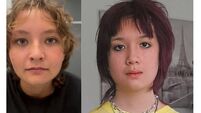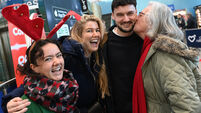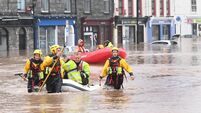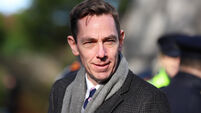Historians shed new light on first arrival of Vikings to Cork City

Howard Clarke, Professor Emeritus of Medieval Socio-Economic History at UCD, will argue that the first Viking arrivals in the 9th century built a fort or stronghold north of Cork's central island, around present-day North Main Street (pictured).
Two distinct waves of Vikings settled in Cork City and it's now believed the first settlement was not created in South Main Street, but North Main Street.
New theories on the arrival of the Norsemen in Cork are to be discussed by British and Irish academics at a free one-day webinar on June 19, organised by the Cork Historical and Archaeological Society.
Howard Clarke, Professor Emeritus of Medieval Socio-Economic History at UCD, will argue that the first Viking arrivals in the 9th century built a fort or stronghold north of Cork's central island, around present-day North Main Street.
Registration is now open for our conference:
— Cork Historical and Archaeological Society (@CorkHistArchSoc) June 2, 2021
The Vikings and Cork: Raiding, Trading and the Development of the Town - Saturday, June 19
We can't wait for you to hear these exciting papers.
Programme/Speaker Profiles https://t.co/XKYg8fLfQw
Registration: https://t.co/9Ben50d1JE pic.twitter.com/SVIdyAFqTS
He will also propose that the next wave, in the 10th century, didn't initially build a settlement in South Main Street (Beamish & Crawford area) but in and around Cove Street, behind what is now Sullivan's Quay.
While proof of that site's location remains to be found, Prof. Clarke will explain how a combination of evidence from annals, archaeology and post-medieval maps leads him to this conclusion.
The results of archaeological excavations of the central spine of the medieval city in recent decades show that the marshy south island area had been reclaimed and developed by the late 11th century.
Dr Rebecca Boyd will give the conference a flavour of what life was like on the island city, and outline differences between Viking Cork and Viking Dublin.
She said everyday life in Viking Cork is evoked by a small wooden toy boat found under the car park at South Main Street, where several houses were excavated between 2003 and 2005.
“Homes in Cork around this time were compact, around 40sqm in area, and would typically accommodate a nuclear family of parents, children and grandparents,” Dr Boyd said.
Conference organiser, Dr Griffin Murray, a lecturer in archaeology at UCC said: “Importantly, this is the first time that scholars have come together to discuss the historical, archaeological and art historical evidence we have for Viking and Hiberno-Scandinavian Cork. Many of the top academics in Viking Studies in Ireland and Britain are speaking at this special event, so people are in for a real treat."
Registration for the event is via www.corkhist.ie.











